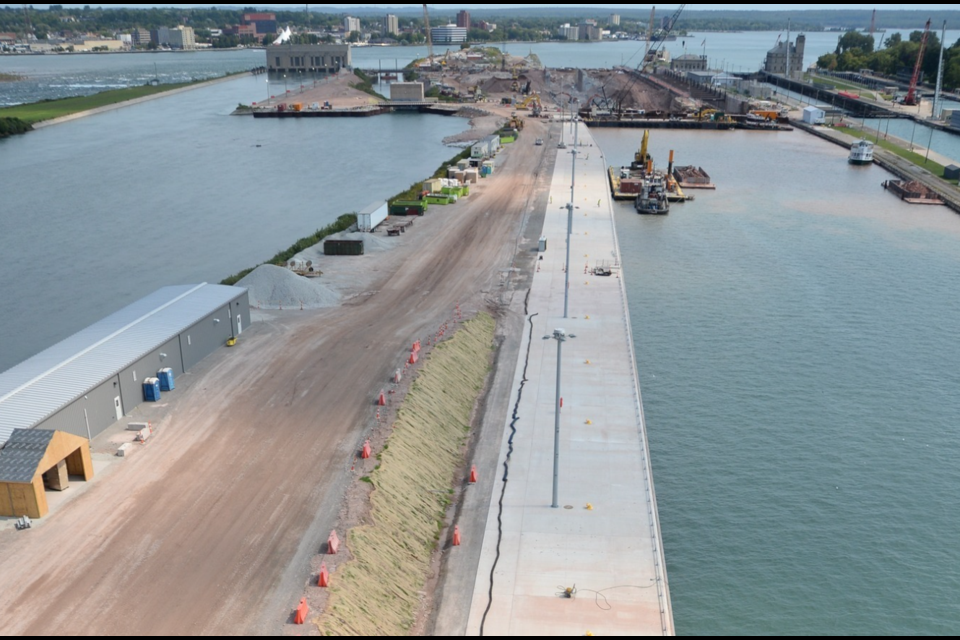The U.S. Army Corps of Engineers delivered a update on its US$3.22-billion construction project to carve out a new lock at Sault Ste. Marie, Michigan.
The Lake Superior side of the approach wall for ships was declared substantially complete on Sept. 17. The contractors, Kokosing-Alberici, of Westerville, Ohio, were awarded that segment of the project - valued at US$117 million – beginning in September 2020.
The “New Lock” project involves the demolition of two obsolete and out-of-commission locks constructed around the time of the First World War and replacing them with a single new lock that can accommodate some of the largest freighters on the Great Lakes.
The corps said construction of the lock is on track for completion in 2030 as long as federal funding keeps flowing and the weather is favourable.
Project construction began in the summer of 2020.
The new lock chamber will measure 1,200 feet long, by 110 feet wide, with a depth of 32 feet, the same dimensions as the existing Poe Lock, which opened to shipping in the late 1960s.
The U.S. Corps of Engineers runs the American locks at Sault Ste. Marie, toll-free for commercial, recreational and passenger shipping on the upper lakes.
This construction project also is a strategic one for U.S. manufacturing and national security. Should the existing Poe Lock be damaged and out of action for a lengthy period of time, it would bring U.S. steel production to a near halt.
The Corps of Engineers say more than 88 per cent of commodity tonnage through the locks goes through the Poe.
In a 2015 report, the U.S. Department of Homeland Security said if the Poe was damaged and inoperable for six months, it would temporarily reduce the U.S. GDP by US$1.1 trillion, resulting in the loss of 11 million jobs.
The project is a three-phase job that involved deepening the Lake Superior side of the canal (completed in 2022), rebuilding the approach wall, and starting construction of the new lock chamber, which began in late 2022.
“Phase 2 work focused on rehabilitating the upstream approach walls to guide vessels into the New Lock and will allow the vessels to moor on the wall,” said Ryan Berkompas, the project engineer of the new lock. “The old approach walls in the northern channel were the same age as the Sabin and Davis Locks, over 100 years old.”
Berkompas said this particular contract officially closes at the end of November once some minor electric work is done.
To do the approach wall, the Corps of Engineers spelled out that 52 coffer cells were constructed, filled and capped with concrete. A combined 4,800 linear feet of walls were rehabilitated and 62,000 cubic yards of concrete were used.
The new lock is being built on the same footprint as one of the old locks, the Sabin, which is being excavating down to bedrock. On the site of the former Davis Lock, which runs parallel to the Sabin, a new pump well will be installed and filled in with excavated material. A new bridge is also being constructed to an adjacent power plant.
The Soo Locks are there to guide commercial, passenger and recreational vessels around the rapids in the St. Mary’s River, a 21-foot (eight metres) drop in water level between Lake Superior and Lake Huron.
More details on this build are available here.




